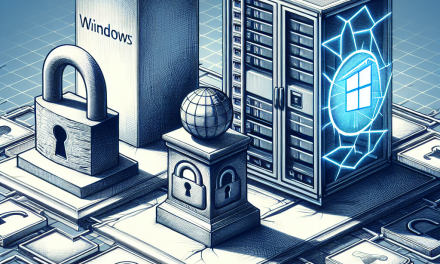In an era where cyber-attacks are becoming increasingly sophisticated, securing the infrastructure of your Windows Server environment is paramount. Implementing a comprehensive security pipeline helps organizations not only to protect their data and resources but also to ensure compliance with various regulatory frameworks. In this article, we will explore how to build and maintain robust security pipelines tailored for Windows Server environments, offering practical insights and best practices.
Understanding Security Pipelines
A security pipeline refers to a systematic approach to integrate and automate security measures throughout your IT environment. It encompasses various phases, including identification, prevention, detection, response, and recovery, effectively forming a security lifecycle. In Windows Server environments, it involves a combination of tools, policies, and processes to ensure that security is embedded within all stages of the system lifecycle.
Key Components of a Security Pipeline
-
Threat Identification and Analysis: The first step in any security pipeline is identifying the potential threats to your Windows Server environment. This includes understanding vulnerabilities inherent in your applications, services, and the server operating system. Tools such as Microsoft Baseline Security Analyzer (MBSA) can help scan your system for weaknesses.
-
Access Control: Implementing strict access control measures is vital. Utilize Active Directory (AD) for role-based access control (RBAC), ensuring that users have only the required permissions to perform their job functions. Use Group Policy to enforce security settings and maintain a minimal permission model.
-
System Hardening: To minimize vulnerabilities, systems should be hardening before deployment. This involves disabling unnecessary services, implementing firewalls, and using security configurations outlined in the Security Technical Implementation Guides (STIGs) offered by the Defense Information Systems Agency (DISA).
-
Real-time Monitoring and Logging: Continuous monitoring is essential to detect suspicious activities that may indicate a security breach. Use Windows Event Logs, along with tools like Microsoft Advanced Threat Analytics (ATA) and Azure Sentinel, to collect and analyze logs in real-time for immediate insights.
-
Regular Patch Management: Regularly applying patches and updates to your Windows Server is crucial. Utilize Windows Server Update Services (WSUS) for managing and distributing updates, ensuring that your security measures are constantly up-to-date.
-
Incident Response Planning: An effective incident response plan prepares your organization to quickly react to security breaches. Define specific procedures to identify, contain, eradicate, and recover from security incidents. Conduct regular drills to ensure your team is ready to respond effectively.
-
Backup and Recovery: Maintaining a reliable backup and recovery program is essential. Employ Windows Server Backup and other backup solutions to create regular backups of your critical data. Additionally, test your recovery plan periodically to ensure that data restoration is both reliable and efficient.
- Compliance and Auditing: Regular audits help maintain compliance with regulations such as GDPR, HIPAA, or PCI-DSS. Utilize tools like Microsoft Compliance Manager to assess your compliance posture and ensure your security measures align with industry requirements.
Automating Security Pipelines
Automation plays a crucial role in enhancing the efficiency and effectiveness of your security pipelines. Below are ways to automate security tasks within Windows Server environments:
-
Windows PowerShell: Utilize PowerShell scripts to automate tasks such as user provisioning, auditing, and enforcing security policies. This can significantly reduce the risk of human error.
-
Azure Automation: For organizations leveraging Azure, employing Azure Automation allows for automatic deployment of updates, security configurations, and monitoring tasks across virtual machines and applications hosted on Windows Server.
- Continuous Integration/Continuous Deployment (CI/CD): If you are developing applications, consider integrating security into your CI/CD pipeline. Tools like Azure DevOps provide features to automate security checks within the development lifecycle.
Conclusion
Implementing a comprehensive security pipeline in Windows Server environments is not a one-time project but rather an ongoing process. It requires constant vigilance, regular updates to security measures, and a culture of security awareness within the organization. By following the strategies and best practices outlined in this article, you can significantly enhance the security posture of your Windows Server environment while keeping pace with the evolving threat landscape.
For organizations looking to safeguard their IT infrastructure, prioritizing a comprehensive security pipeline is essential for resilience and compliance in today’s digital world. Stay proactive, prepared, and protected.
For more insights on Windows Server security and best practices, subscribe to WafaTech Blogs and stay updated!





